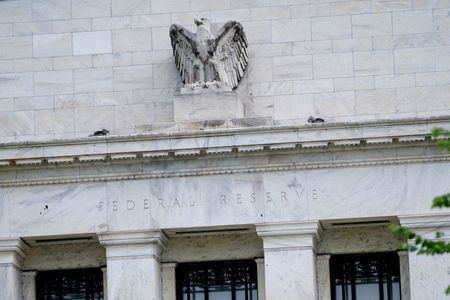By Michael S. Derby
(Reuters) – A Supreme Court case upending how government regulators do their work thrusts Federal Reserve bank overseers into extended uncertainty and potential risk, although the ruling should not complicate the central bank’s ability to provide support to markets in times of stress.
The court, in an opinion released on Friday, overturned a precedent that gave deference to regulatory agencies as they interpreted the work of lawmakers. Experts reckon this shift opens Fed regulatory decisions to legal challenges with unpredictable outcomes, unsettling the relationship between the Fed and the institutions it oversees for years to come.
Some academics fret the new landscape could also make the financial system less safe, although most agree the legal foundations that give the Fed space to provide emergency support remain on solid footing.
For now, the key upshot is “the increase in uncertainty” as affected parties adjust to greater court involvement, said Kathryn Judge, a professor at Columbia University’s law school.
Fed bank supervisors “may be less inclined to regulate aggressively out of fear that banks, being the more well-funded out of the potential litigants, are more likely to fight back in the event of aggressive regulation,” Judge said. “But there’s no reason to assume that courts are necessarily going to be any more inclined to side with banks,” and that lack of clarity means it will be hard to know how any rule challenges will ultimately shake out, she said.
When it comes to its expansive regulatory work, “the Fed is used to enjoying an incredible amount of deference based in large part on its technical expertise. Those days are behind it,” said Michael Held, of law firm WilmerHale, who was until 2022 the head lawyer at the Federal Reserve Bank of New York.
Held said he expects future regulation will aim for rules that are “understandable and defensible” before judges, but even then, “I think we will also see an increased willingness in the industry to pursue legal challenges to regulations they do not like.”
The Fed declined to comment on how the court’s decision will impact the institution’s bank oversight work.
RISK MANAGEMENT
Some academics believe gun-shy regulators could mean more risk for the financial system. Graham Steele, a senior fellow at the Roosevelt Institute and former top Treasury Department official in the Biden Administration, said “the ruling itself is a disaster, but it is a disaster that generally flows in the direction of making regulation harder.”
Lessons learned from past financial crises show “that regulators need to get out ahead of emerging risks when they see an emerging practice or activity that has the potential to cause safety and soundness or financial stability risks,” Steele said. If there’s a lack of clarity for how rules can be written and regulators hold back “that will allow these risks to bubble up, and to me it’s a matter of when, not if, that kind of risk actually materializes.”
Whatever rule-making challenges the Fed faces, its core mission as a lender of last resort appears intact, meaning its ability to provide emergency liquidity and other forms of banking sector support with Treasury’s approval should remain.
The law giving the Fed its emergency lending powers “is pretty explicit” and “in that sense it seems much more clear” than banking regulation, said Steven Kelly, associate director of research at the Yale School of Management’s Program on Financial Stability, adding it’s also less likely that banks would sue to stop such efforts.
That said, “each of the Fed’s emergency lending actions is distinctive” and there are ways a program could be set up, for example to benefit a specific industry like green energy, that could create grounds for a legal challenge, said Christina Parajon Skinner, a business and legal professor at the Wharton School of the University of Pennsylvania.
(Reporting by Michael S. Derby; Editing by Andrea Ricci)





